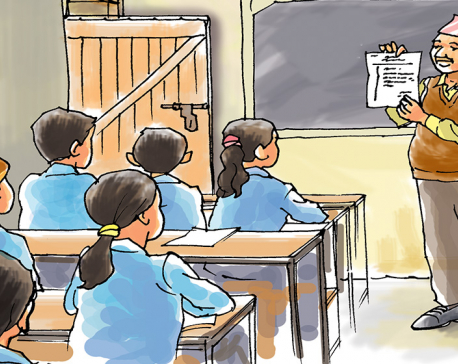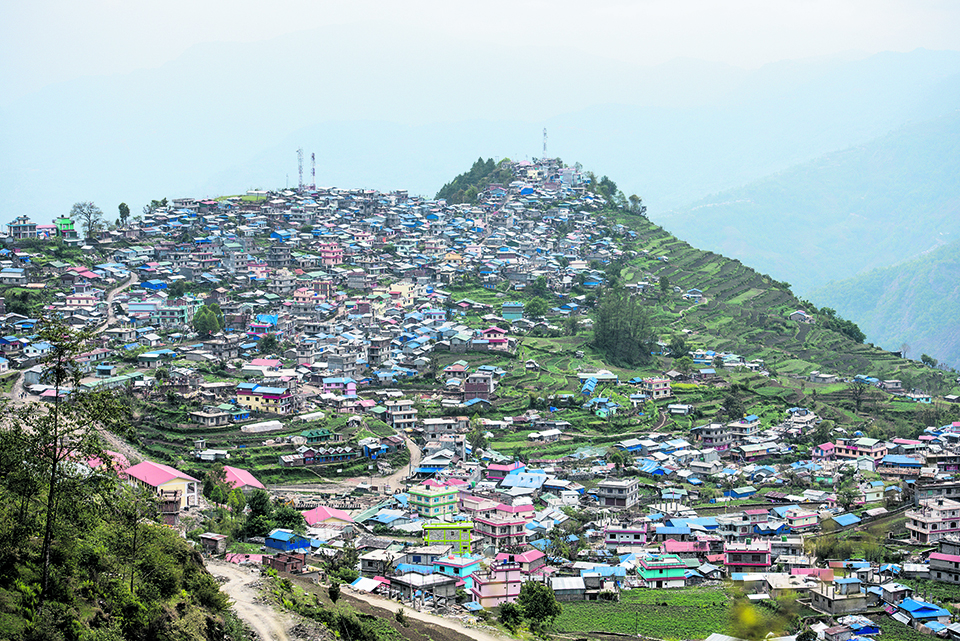
OR
Incidents of dengue
The South Asian monsoon is nearly over. Yet the incidents of typically monsoon-related diseases show no sign of abating in Nepal. One of them, dengue, has now been identified in at least 220 people in Chitwan district, with 80 percent infections reported from just one municipality of Ratnanagar. Dengue had been first reported in Chitwan around two months ago. But just when health authorities thought they had it under control, the number of cases in the district exploded right on the eve of Dashain. The good news is that dengue fever is rarely deadly. Among those who get timely treatment, 99 percent patients survive. But the longer it takes to identify the virus, the higher the chances of fatalities. The health workers in Chitwan have identified a disturbing pattern.
Since the initial symptoms of dengue are mild, people tend to mistake them for symptoms of common flu, which makes them not to seek treatment. Therefore doctors are advising patients with flu-like symptoms to quickly consult them to rule out dengue, and if dengue is what they have, to immediately start treatment. The Epidemiology and Disease Control Division of the Department of Health Services (DoHS) has also sent an inspection team to take stock of the disease in Chitwan.
But containing the disease in Chitwan will be only half the battle won. In the past week, 12 new dengue cases have been reported from inside Kathmandu valley. Doctors suspect those returning from Chitwan after celebrating Dashain brought the virus into the capital. This is a dangerous development. The valley is considered a high-risk area for dengue with its shoddy waste disposal system and many pockets of stagnant water, which are the perfect breeding grounds for Aedes mosquito which carry dengue. The health authorities suspect that the reported cases, both in Chitwan and Kathmandu, are only the tip of the iceberg and because of under-reporting the number of infected could be at least two or three the reported number. It is strange that we are not better prepared to handle these perennial illnesses. Dengue was first spotted in Nepal nearly a decade ago and there was a big epidemic in 2010. Yet we seemed to have learned nothing from these previous bouts of dengue. Otherwise, there would by now have been dedicated cells in the health service department to quickly indentify and treat dengue as well as other monsoon-time menaces like typhoid and cholera.
There would also be more spending in informing the public of the dangers of exposure to mosquitoes and on the ways to keep themselves safe. In the pockets that are traditionally vulnerable to these diseases there would be quick-response teams, ready to spring into action.
Instead, as happens every year, this year also the health authorities woke up to the challenge only when the dengue epidemic was threatening to get out of control and they got panicky. But the people living in these hotspots are also to blame. Many of them would by now have heard of, and many even experienced, at least one of these dangerous diseases. Yet most of them don’t adopt even minimal precautions, for instance to avoid mosquito bites. Yes, not enough has been done to spread awareness. But if even those who have received credible health warnings blithely ignore them, the government or NGOs can do little on their own to stamp out these potentially deadly diseases.
You May Like This

Take necessary measures to ensure education for all children
Thousands of children, with bright minds and hopeful futures, are still denied the fundamental right to education in Sarlahi district... Read More...

Not without reform
Finance Minister Muhammad Aurangzeb says that the economy has the potential to grow 10 times its size to $3tr for... Read More...

Threats, attacks on journalists must stop
Yet another journalist has become a victim of violence and intimidation, reinforcing the fact that the authorities are still failing... Read More...







Just In
- Illam by-election: Nepal-India border to be 'sealed' from midnight today
- Gold price rises by Rs 500 per tola
- Emir of Qatar returns home after wrapping up state visit to Nepal
- Senate passes bill forcing TikTok’s parent company to sell or face ban, sends to Biden for signature
- PM Dahal hosts luncheon in honor of Qatari Emir
- Tata Sumo accident in Kavre leaves 10 injured, three in critical condition
- West Indies ‘A’ cricket team arrives in Nepal
- Barpark commemorates 2015's Gorkha Earthquake



_20240423174443.jpg)








Leave A Comment